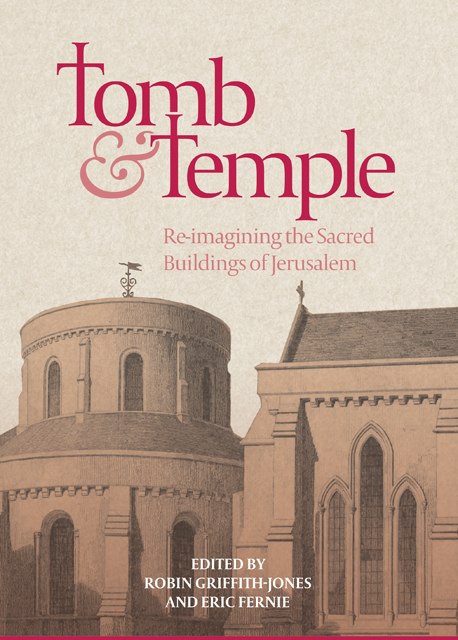Book contents
- Frontmatter
- Contents
- Illustrations
- Preface
- Contributors
- Abbreviations
- Editors’ Note
- Introduction
- Part I Re-presenting Jerusalem
- Part II The Church of the Holy Sepulchre
- Part III The Noble Sanctuary / The Temple Mount
- Part IV The Orthodox Churches
- Part V Round Churches in the West
- Appendix: The Knights’ Effigies: Newly Discovered Drawings by John Guillim, c. 1610
- Epilogue
- Index
- Already Published
10 - Saint James the Just: Sacral Topography in Jerusalem and Constantinople
Published online by Cambridge University Press: 17 January 2023
- Frontmatter
- Contents
- Illustrations
- Preface
- Contributors
- Abbreviations
- Editors’ Note
- Introduction
- Part I Re-presenting Jerusalem
- Part II The Church of the Holy Sepulchre
- Part III The Noble Sanctuary / The Temple Mount
- Part IV The Orthodox Churches
- Part V Round Churches in the West
- Appendix: The Knights’ Effigies: Newly Discovered Drawings by John Guillim, c. 1610
- Epilogue
- Index
- Already Published
Summary
Eusebius set a high bar for the building of churches when he wrote to Paulinus, the bishop of Tyre: ‘shall I call you a new Bezalel, the master builder of a divine tabernacle, or a Solomon, king of a new and far nobler Jerusalem, or a new Zerubbabel, who adorned the temple of God with the glory that was far greater than the old?’ This idea of the church replacing or surpassing the Temple, the new city as outdoing the old, is inherent in the relations between Jerusalem and Constantinople. With the establishment of Christianity as an imperially sponsored religion and the building by the Constantinopolitan emperors of the Holy Sepulchre complex on the purported site of Christ’s anastasis (resurrection), there was no drive to reconstruct the Jewish Temple on the Temple Mount. Christ prophesied after all that it would be destroyed (Matt. 24.1–2). In the late seventh century, the Temple site was claimed for Islam with the building of the Qubbat as-Sakhra, the Dome of the Rock, and when Jerusalem was recovered for Christianity from the Muslims in 1099, it was here that a new Christian focus developed. It was known as the Templum Domini, identified as being (or at least being on the site of) the Temple in which the infant Christ had been presented to Simeon forty days after his birth (Luke 2.22–38).
Constantinople itself, however, had no heritage connected with either the Old or the New Law. It had, then, two principal ways of establishing its religious legitimacy and prestige as the centre of Christianity in the world. One was by building outstandingly beautiful and richly ornamented buildings to the glory of God, which perhaps symbolically surpassed the Temple. The other was by taking holy relics and reinstalling them in Constantinople, thus physically embedding sanctity in the capital city, and then developing the sites with liturgical rites.
Sacred tradition was reinforced through the veneration of relics. Those of St James, the first bishop of Jerusalem, were honoured in both Jerusalem and Constantinople: in Constantinople, from the sixth century in a centralised chapel adjacent to the Church of the Virgin Chalkoprateia; and in Jerusalem, from the twelfth century in a similarly centralised building near the Dome of the Rock, linked with the Presentation and hence with the Virgin.
- Type
- Chapter
- Information
- Tomb and TempleRe-imagining the Sacred Buildings of Jerusalem, pp. 194 - 210Publisher: Boydell & BrewerPrint publication year: 2018



